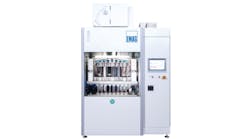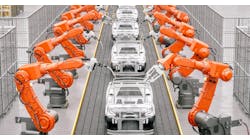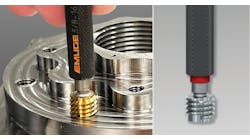SCHUNK is putting the power of data in your hands with the iTendo sensory toolholder. For the first time, it will be possible to monitor machining processes at high resolution at the tool and to control cutting parameters in real-time. The required acceleration sensor and electronics are integrated into the toolholder without affecting its interfering contour and other characteristics.
The iTendo seamlessly records the metal cutting process, monitors previously defined exact limit values, and, in the event of irregularities, enables real-time adaptive control of the speed of rotation and feed rate, among other measures. Equipped with a sensor, battery, and transmitting unit, the intelligent toolholder records the data at the tool and transmits it wirelessly via Bluetooth to a receiver unit in the machine room, where it is forwarded by cable to a control and evaluation unit. This makes the system fundamentally different from other solutions for process monitoring by providing precise process data. In pilot applications, intelligent mounting has proven performance for milling, drilling, countersinking, and even deburring.
In a first step, Schunk is standardizing the iTendo for the common interface HSK-A 63 with clamping diameters from 6 to 32 mm and a length of 130 mm. The sensory toolholder is suitable for the use of coolant and is designed for speeds of up to 10,000 RPM.
The commissioning and data analysis is carried out via a browser-based dashboard on standard PCs, tablet computers or smartphones. In the simplest configuration, which can be implemented completely without machine-side adjustments, the live data from the sensor can be displayed on the Schunk dashboard via a local connection. For this purpose, Schunk provides a special case system with an integrated display, enabling toolholder commissioning within two hours and with minimal effort.
In a second configuration, the real-time controller is ideally connected to the machine control system by a service technician via digital or analog I/O so that, for example, alarms can be triggered or processes can be adaptively controlled. The third and most sophisticated configuration enables additional information exchange with the machine (e.g. in the case of the latest Siemens control system via OPC UA). All variants can also be operated and centrally controlled via a cloud solution. Learn more at https://schunk.com
For more new products, visit newequipment.com






